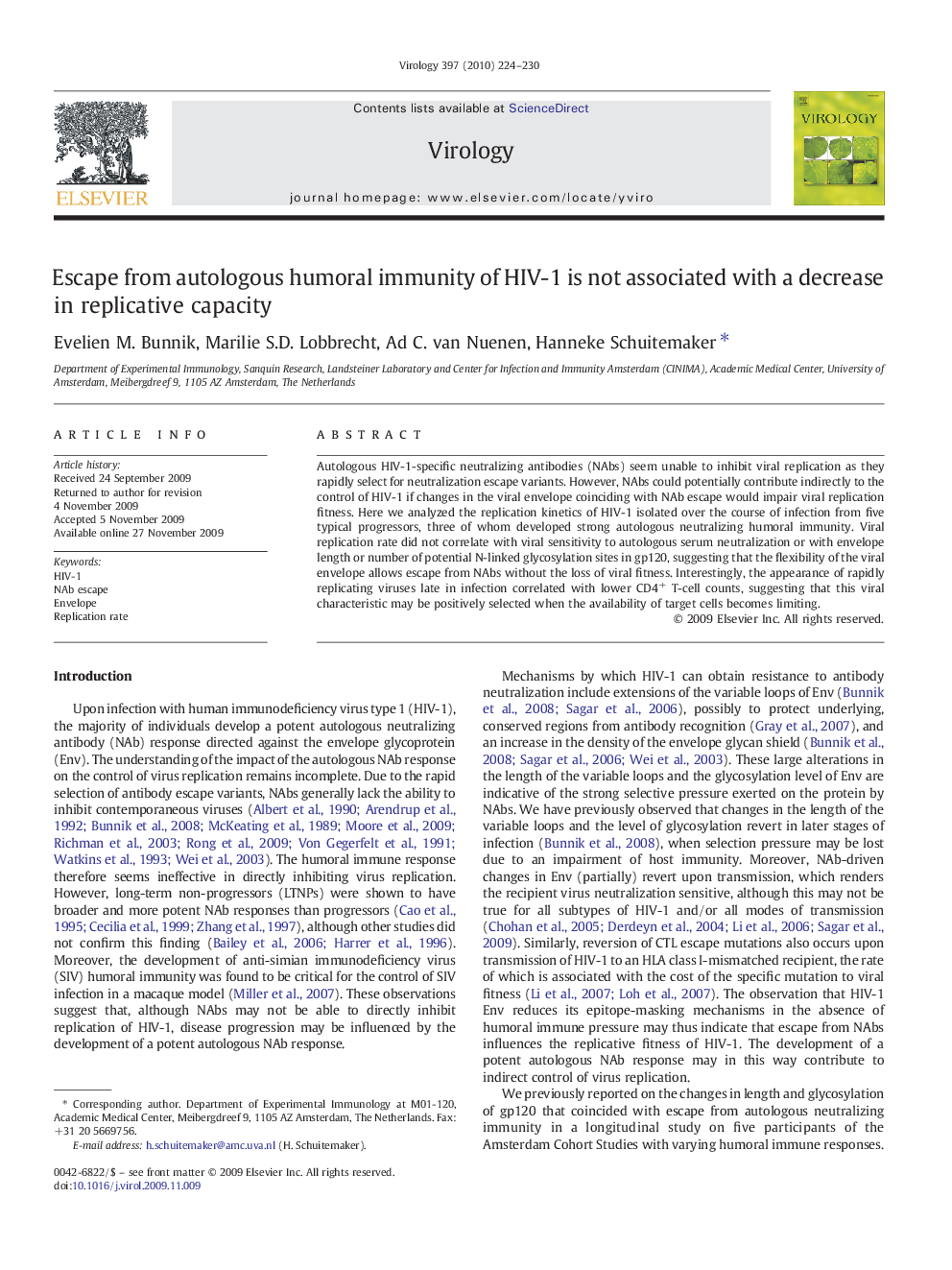| Article ID | Journal | Published Year | Pages | File Type |
|---|---|---|---|---|
| 3425158 | Virology | 2010 | 7 Pages |
Autologous HIV-1-specific neutralizing antibodies (NAbs) seem unable to inhibit viral replication as they rapidly select for neutralization escape variants. However, NAbs could potentially contribute indirectly to the control of HIV-1 if changes in the viral envelope coinciding with NAb escape would impair viral replication fitness. Here we analyzed the replication kinetics of HIV-1 isolated over the course of infection from five typical progressors, three of whom developed strong autologous neutralizing humoral immunity. Viral replication rate did not correlate with viral sensitivity to autologous serum neutralization or with envelope length or number of potential N-linked glycosylation sites in gp120, suggesting that the flexibility of the viral envelope allows escape from NAbs without the loss of viral fitness. Interestingly, the appearance of rapidly replicating viruses late in infection correlated with lower CD4+ T-cell counts, suggesting that this viral characteristic may be positively selected when the availability of target cells becomes limiting.
